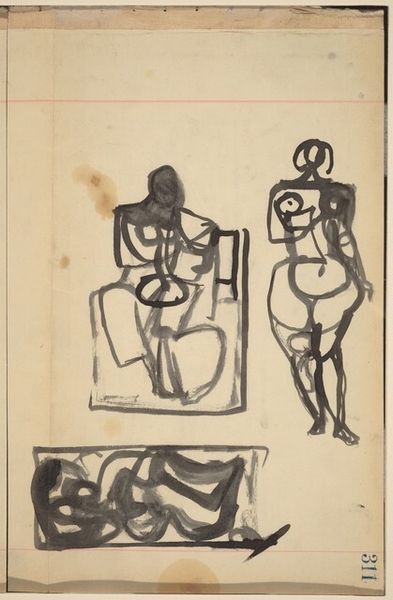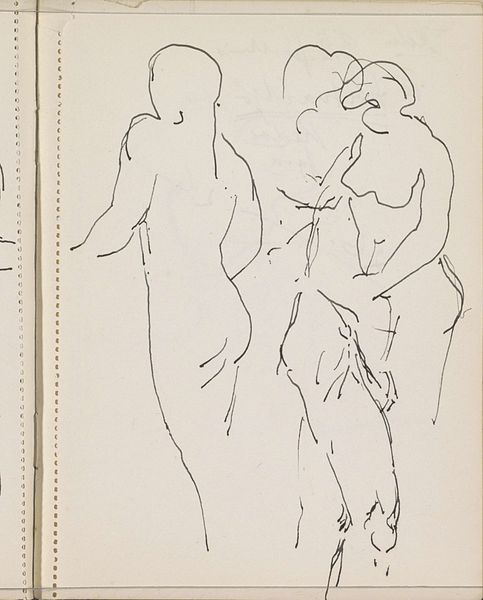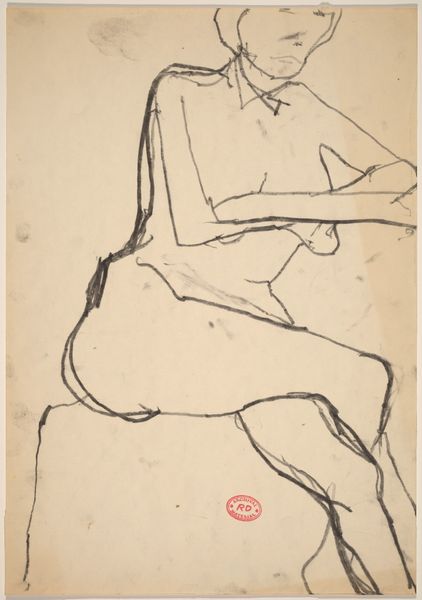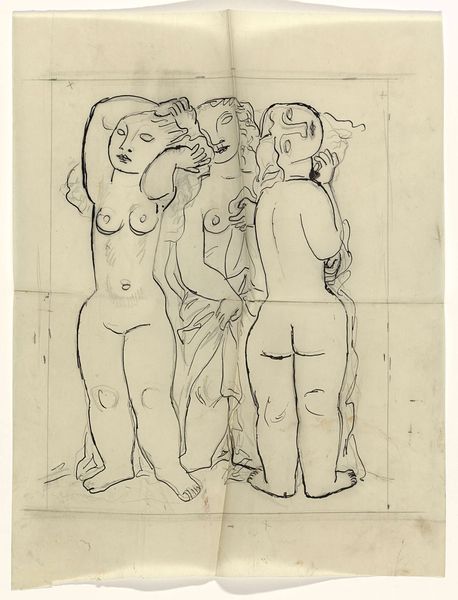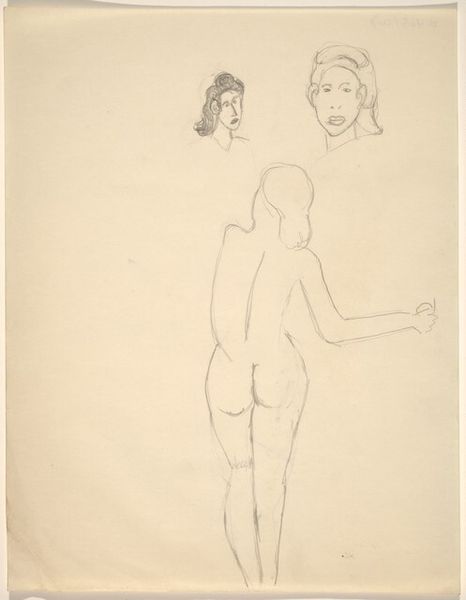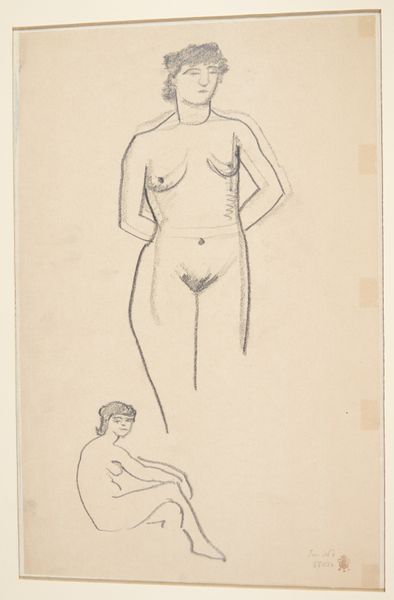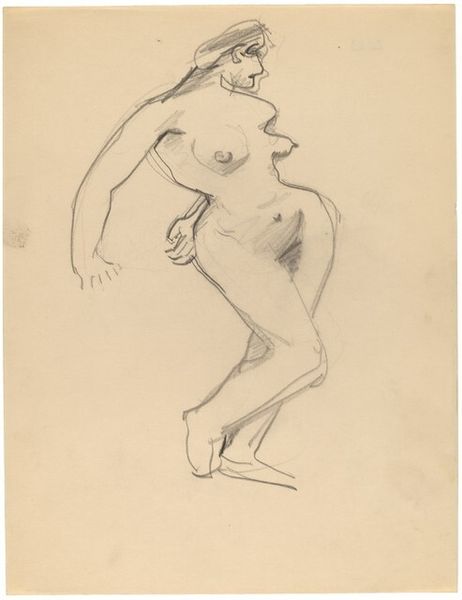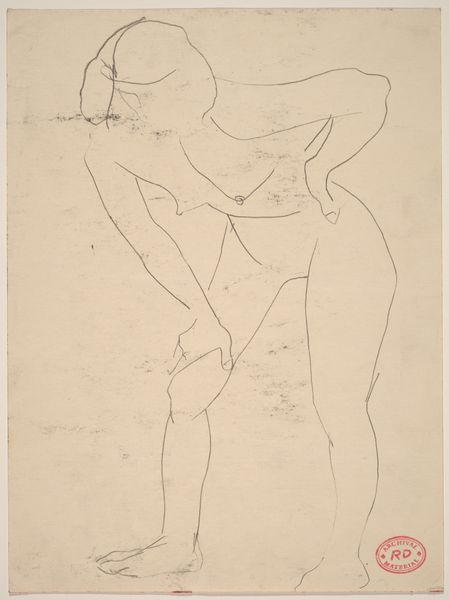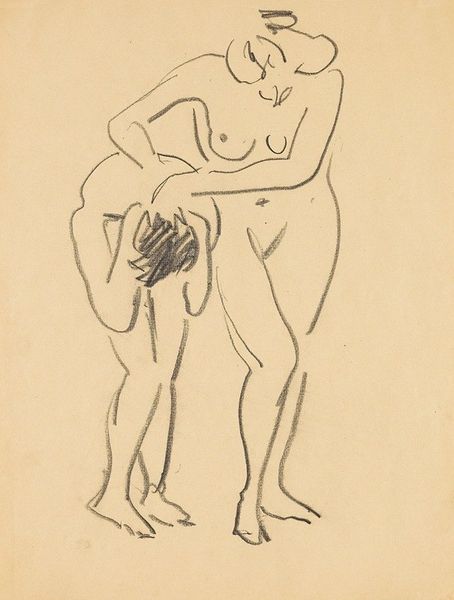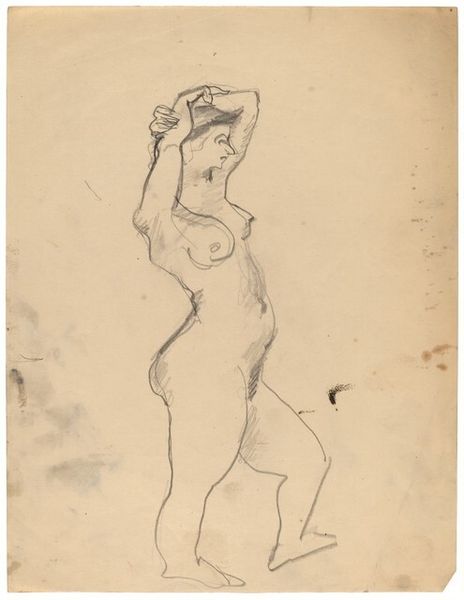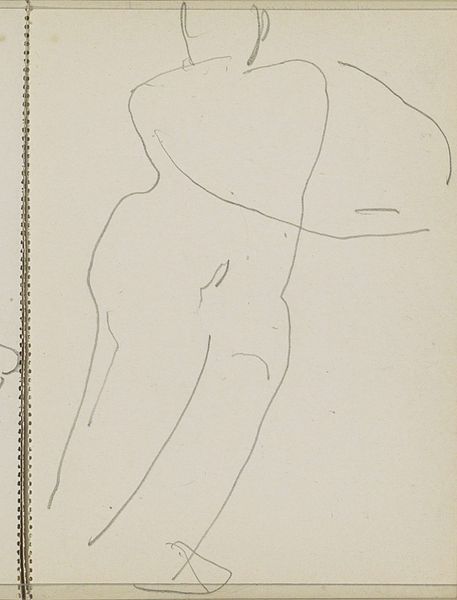![Two Studies of Standing Female Nude [recto] by Franz Kline](/_next/image?url=https%3A%2F%2Fd2w8kbdekdi1gv.cloudfront.net%2FeyJidWNrZXQiOiAiYXJ0ZXJhLWltYWdlcy1idWNrZXQiLCAia2V5IjogImFydHdvcmtzL2I0NmU1NmMyLTg1ZTEtNGU1NS04OTQxLTFmZjEyNjVkMzQxYi9iNDZlNTZjMi04NWUxLTRlNTUtODk0MS0xZmYxMjY1ZDM0MWJfZnVsbC5qcGciLCAiZWRpdHMiOiB7InJlc2l6ZSI6IHsid2lkdGgiOiAxOTIwLCAiaGVpZ2h0IjogMTkyMCwgImZpdCI6ICJpbnNpZGUifX19&w=1200&q=75)
drawing, paper, ink
#
abstract-expressionism
#
drawing
#
figuration
#
paper
#
ink
#
nude
Dimensions: overall: 27.8 x 24 cm (10 15/16 x 9 7/16 in.)
Copyright: National Gallery of Art: CC0 1.0
Curator: This is Franz Kline's "Two Studies of Standing Female Nude [recto]", created sometime in the 1940s or 50s. He used ink on paper to achieve this image. Editor: The starkness hits me first. These women rendered with such bold, dark strokes on that pale paper... they feel exposed, vulnerable. Curator: Kline was a leading figure in abstract expressionism. It's interesting to consider this drawing of female nudes in that context. He’s not just capturing the figure, he's engaging with the politics of representation, deliberately using raw, unrefined strokes. This work could also be put in dialogue with contemporaneous views on female bodies, sexuality and power. Editor: Precisely. Notice how the density of the lines around certain areas, like the one figure's hair, or the implied curvature of their hips, creates a potent visual emphasis. It’s as if he’s highlighting culturally significant features, inviting the viewer to project their own ideas about beauty, sensuality, or societal expectations onto these archetypal figures. Curator: The composition, too. Two figures, but distinctly rendered. The figure to the left almost dissolving into a sketch. It almost creates a ghostly contrast, forcing one to question not only the gaze directed at women in art, but the inherent power dynamic between artist and model as well. Editor: Indeed. Even in its incompleteness, the suggestive nature of each figure, rendered by such thick bold lines, sparks emotional recognition. We fill in the blanks from a deeply personal reservoir. Consider what the simple act of depicting such recognizable, culturally-entrenched themes as "femininity" or "beauty" means within Kline's artistic vocabulary. Curator: This exploration of identity, gender, and power dynamics seems even more relevant today. The raw and unfinished aesthetic challenges idealized depictions of the female form, provoking conversations about societal beauty standards. Editor: And it’s through symbols, or the *lack* thereof here – Kline offers minimal symbolic identifiers -- that the essence shines through. A connection to fundamental human experience is created by the stark form of simple lines, inviting introspective reflection and emotional recognition of cultural memories and experiences of our own past. Curator: Seeing it through both lenses – yours, focused on enduring symbolic weight, and mine, highlighting historical and social commentary, brings fresh perspectives. Editor: Yes, what a provocative work!
Comments
No comments
Be the first to comment and join the conversation on the ultimate creative platform.
